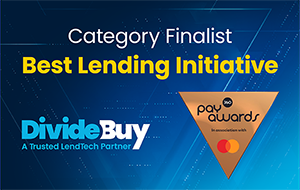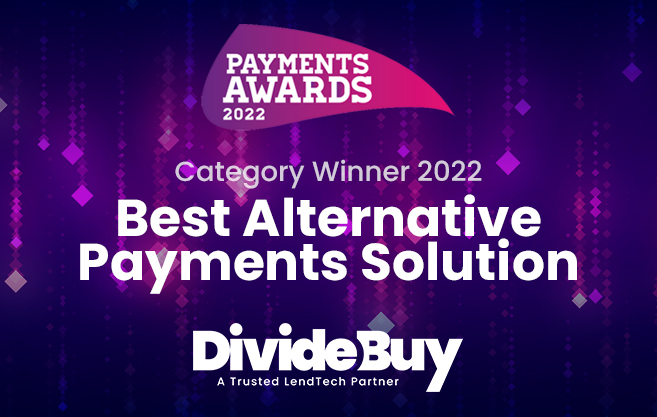In today’s competitive retail landscape, consumer finance options have become crucial to achieving growth and success. 38% of UK customers expect to use POS finance more than usual in the next 12 months.
Whether you’re new to finance or considering a change in provider, use this practical list to tick all the right boxes – and find the best lending fit for your business.
1. Identify Your Needs
When considering a finance provider, it’s essential to identify your specific needs. Think about…
– Term length
Retail finance lets customers spread the cost of a purchase over a period of months (typically from 3 months onwards). Interest free finance options tend to stretch over shorter periods, while interest bearing finance often supports longer term borrowing. Find out more about retail finance term lengths here.
– Credit bandings
Customers usually fall into a specific credit banding (for example, Excellent, Good, Fair, Poor), which influences their finance options. Think about your customer demographic and whether they’d be approved for your preferred finance options. Find out more about credit score bandings here.
– Profit margins
The margin you have on product will help you decide whether you need interest free finance, interest bearing finance or both. While interest bearing finance passes the cost of borrowing onto the customer, interest free finance requires you, the merchant, to pay borrowing fees to the finance provider instead of the customer – so be sure your margins can take the hit.
– Average order value
Finance providers normally have minimum and maximum spend thresholds on their solutions. Knowing how much customers typically spend will help you determine which finance provider you need to help them spread the cost of a standard purchase.
2. Research providers
Once you’ve identified your needs, conduct thorough research on potential credit providers. Here are some initial factors to consider when deciding which finance provider to reach out to:
– How they perform
– If they work with others in your sector
– Their reviews and reputation
– Recommendations from other merchants
It’s always worth asking any prospective finance provider to put you in touch with their satisfied customers – especially ones in your industry. If you attend networking events for your sector, ask around to see which finance providers are recommended – and which to avoid.
Trustpilot and Google review ratings are another obvious way to measure satisfaction. Investing time in this research phase will help narrow your options down to a select list of providers – saving you a lot of time and potential problems in the long run.
3. Evaluate Financing Options
Now that you’ve identified what you aim to achieve with a finance solution, it’s time to see how your selected list of providers align with those goals. Here’s some key information you should ask them about:
– Integration capabilities
Whichever eCommerce platform you’re using, be sure your prospective finance provider can integrate quickly and seamlessly. Ask them if they have a native app that’s compatible with your platform, or whether you’ll need to integrate using an open API. Who handles the process, what costs are involved, and how quickly can you go live with your solution?
– Ease of customer journey
How quick and simple is it for customers to complete a credit application? How many fields is the form, and how fast can they get a lending decision? These are key aspects of keeping your customers in the sales pipeline.
– Soft search options
24% of people said they’re more likely to take out a finance agreement if they knew they were eligible up front. Find a provider that offers customers a soft check first which tells them if they’re likely to be eligible for what they want to borrow – without affecting their credit score.
– Completion, approval and conversion rates
A quick, simple journey means more customers will complete an application form for finance, instead of dropping out. Ask to see completion rates for merchants with similar profiles to yours.
Approval rates are another key stat to check. How many customers are they approving within your customer credit banding and average order value? Finally, how many customers who complete an application and are approved for finance actually convert at checkout?
– Interest rates and merchant fees
If you’re looking at interest free finance, find out how much you’ll be charged per transaction. With interest bearing finance, these charges come in the form of APR – which the customer pays. Obviously, lower interest rates can attract more customers and make the credit option more appealing. However, this will impact your profit margins. Similarly, customers looking for interest bearing options will take APR into account – so be sure to check these facts.
Most finance providers also charge merchants a fixed monthly fee, plus commission on ever sale. These rates are less important than the results that they’re delivering. A provider might charge you lower rates, but if their solution is failing to convert or they’re only approving a small percentage of your customers, you’re not going to get the results you want.
– Late fees and hidden charges
Some lenders charge customers late fees or penalties if they miss a payment. But some, like DivideBuy, don’t charge these fees to avoid putting your customer into financial hardship. Make sure you check any potential lender’s policies around this.
The best way to assess a finance provider’s user experience is to ask for a demo of their journey – from application to order confirmation.
For a more in-depth dive into the importance of user experience, visit our blog on why it’s so important for eCommerce here.
4. Know which numbers matter
Anyone can quote dazzling numbers – but what value are these stats really adding to your business? We’ve touched on these numbers earlier on, but lets take a closer look at what they mean and why they matter.
– Completion rates
You can invest in a stellar customer journey and get them clicking ‘apply’. But if it’s going to take them through 15 pages of ten-field forms, asking for information they may not have to hand, the customer’s going to drop out.
– Approval rates
Evaluate the approval rates of finance applications as these are crucial. Higher approval rates mean more customers can take advantage of the finance option, leading to increased sales opportunities.
– Conversion rates
Look for providers that have a proven track record of increasing conversions for merchants with similar profiles to yours.
Once you’ve ticked these actions off your checklist, you should have a shortlist of providers and be able to make a provisional decision to move forward with whichever lender best suits your needs.
To find out about questions to consider during the pre-onboarding phase, visit our guide on the topic.




 Tweet
Tweet
 Facebook
Facebook


















